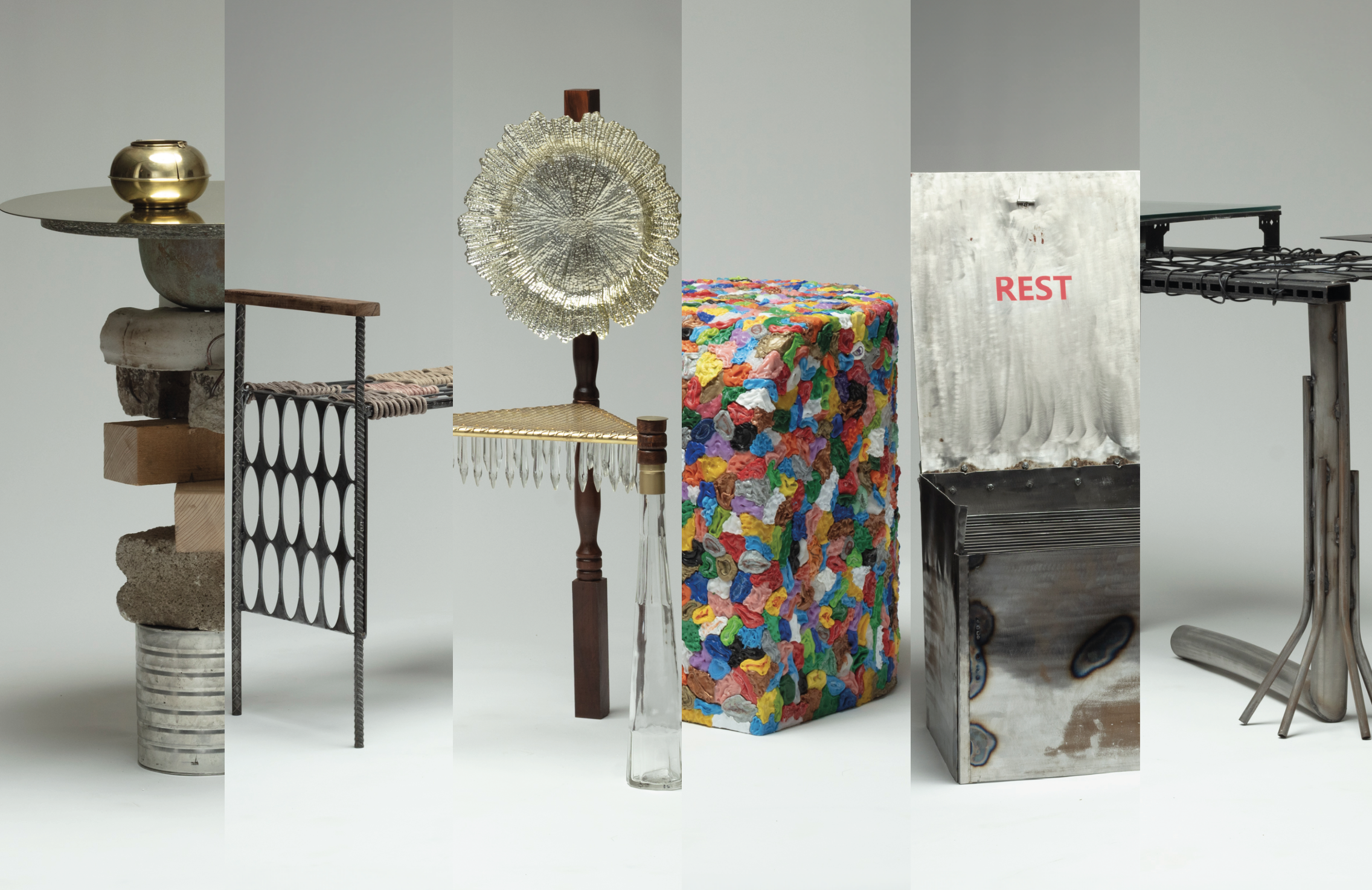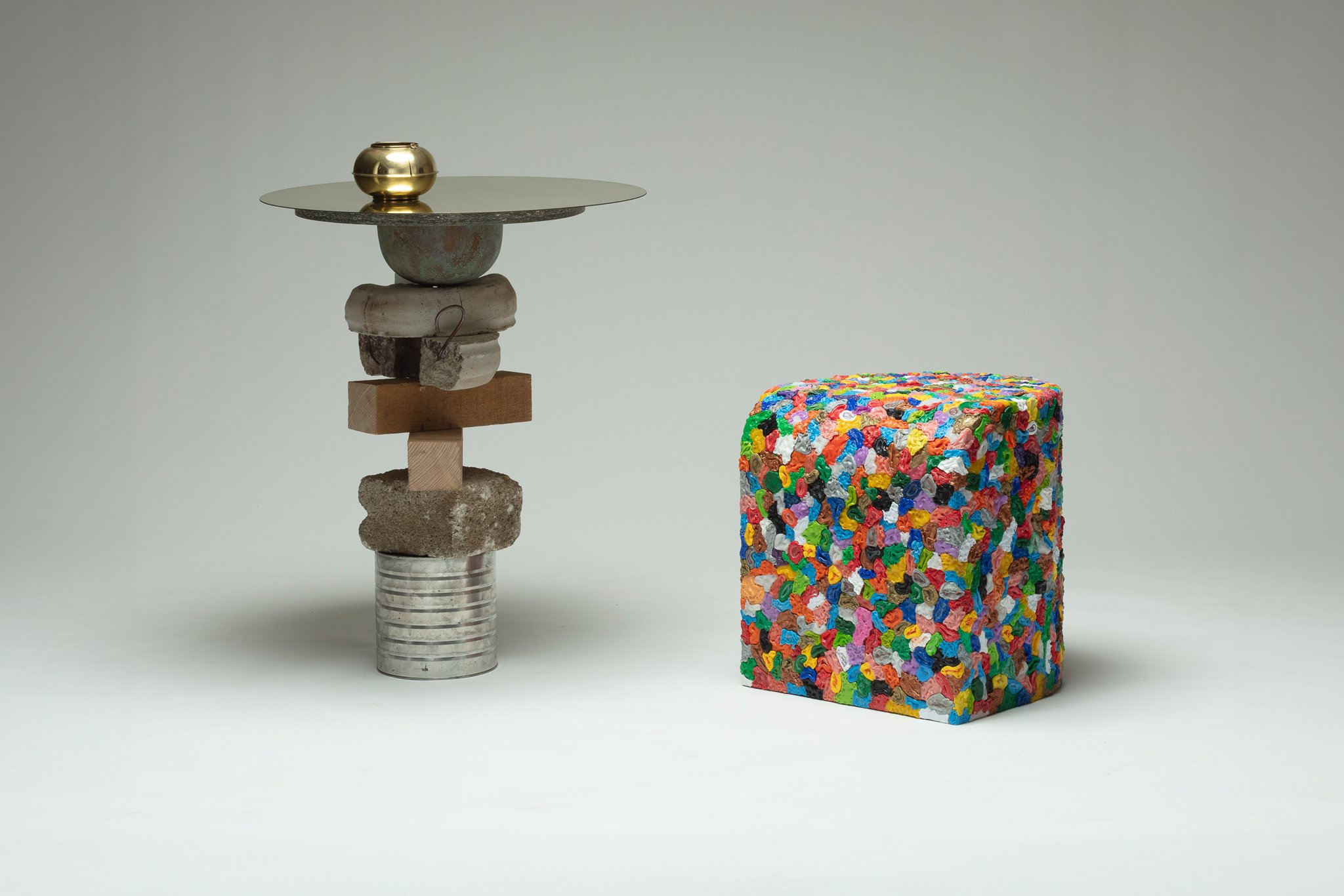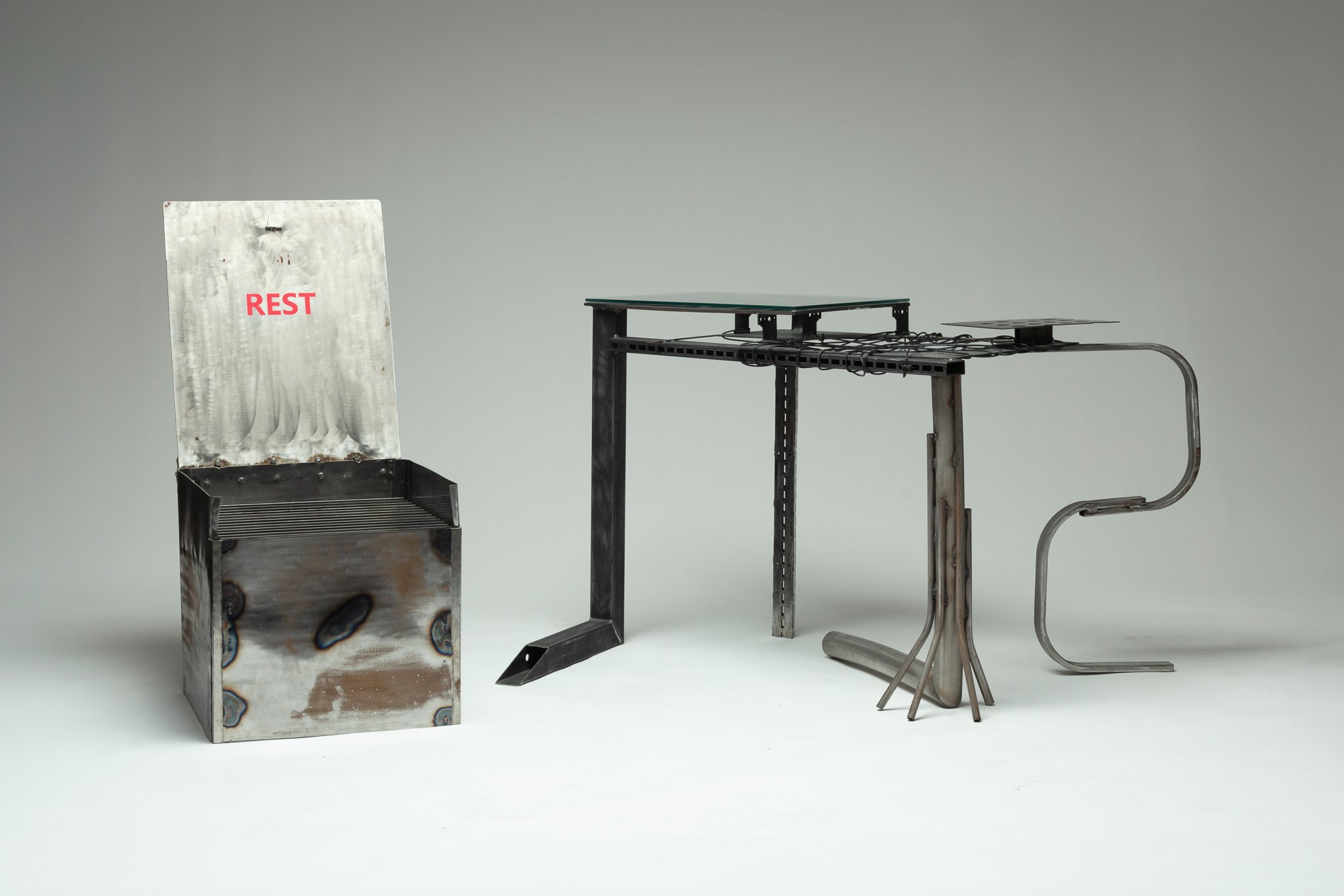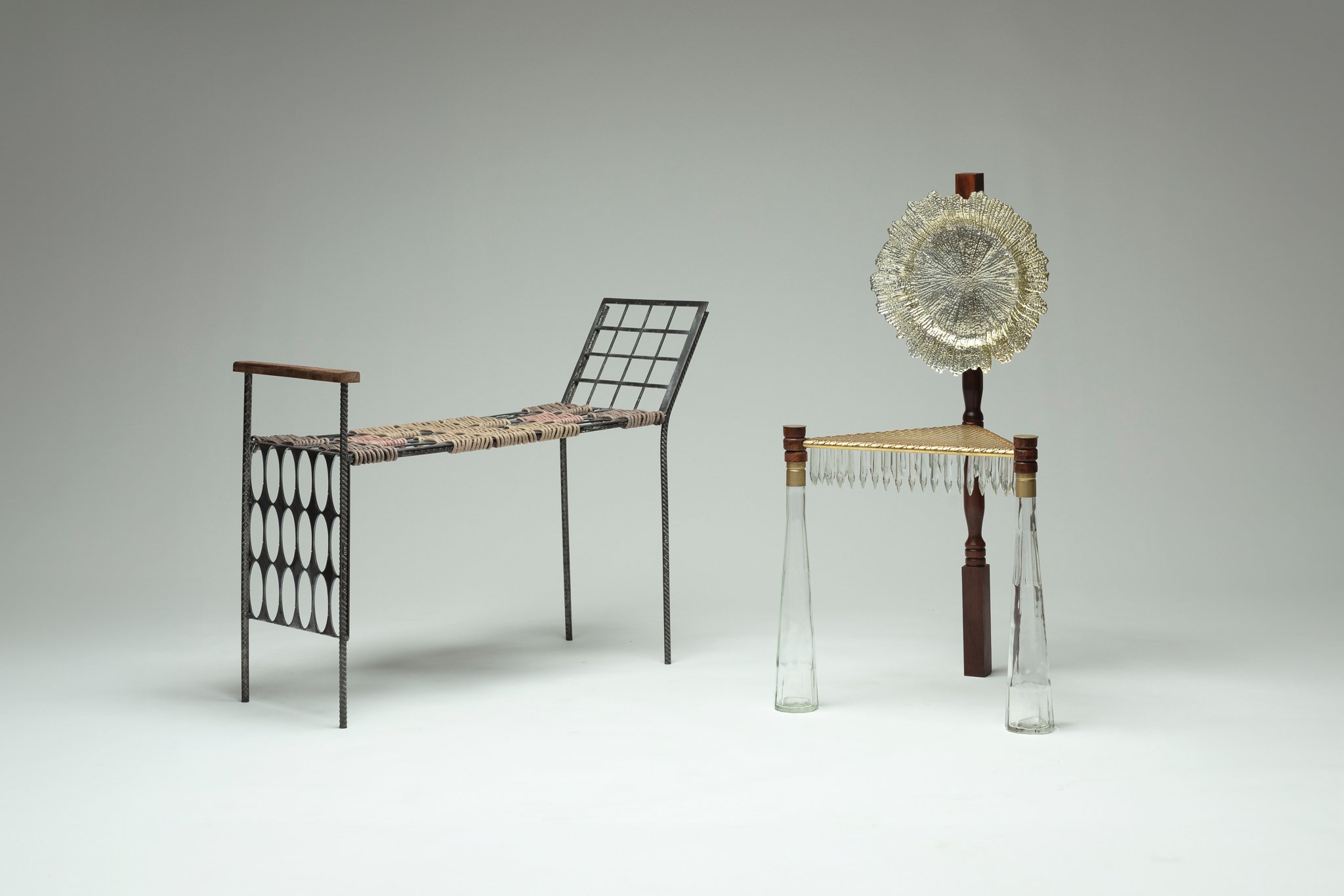FORM, FUNCTION, SENSE, AND VALUE (CCM)
PROFESSORS: MONTSERRAT CASTAÑÓN, OSCAR QUIROGA, RAMIRO ESTRADA, OSCAR MIRANDA
CREATIVE SAVAGE
During the 1980s, Britain was mired in mass unemployment, political polarization, strikes, and social unrest. A group of young creatives comprised of Ron Arad, Tom Dixon, Mark Brazier-Jones, André Dubreuil, Danny Lane, Jon Mills, and Deborah Thomas created furniture with the most rudimentary materials and equipment. With a bold and forceful narrative, using scrap metal and industrial bricolage, they created beauty in the accidental under the name "Creative Salvage."
Taking the essence and philosophy of this movement, the students created sculptural objects from industrial waste, commenting on issues of their current context, such as anxiety, gender violence, and inequality.
"Designed, but designed within the nature of chaos."
CLASE (LEFT)
Regina Ochoa
Coffee table that seeks to materialize the privilege, through a representation of the pyramid social (base and tip).
“...make visible what would otherwise be invisible topeople every day.”
TWO SECONDS STOOL (RIGHT)
Mariana M. Aréchiga
Two Seconds Stool uses furniture as a medium to make visible the environmental impact of our digital actions. The plastic of the part generates the same amount of CO2 as two seconds of use of the internet in the world.
ALGO (LEFT)
Nicolas Riaño
Rest does not exist if the mind does not rest along with the body. Doing or wanting to do -nothing- and being haunted by the thought "I could do something productive with my time" is what I know as rest anxiety. We are human, sometimes that something we need is to allow ourselves a moment of stillness.
CATÁSTROFE (RIGHT)
Ricardo Romero
It´s a coffee table made of residual steel from industrial factories, a fiber optic key network and natural wear finishes and rust.
It seeks to challenge urbanization and communicate themessage of a visual, functional and aesthetic disorganization that many cities suffer due to unplanned sprawl and rushed when the city grew to satisfy daily needs of overpopulation, which ends in urban saturation and little civil security.
BENCH (LEFT)
Sebastian Rios
ARRIBA ES ABAJO (RIGHT)
Lourdes Aguilar
Since Catholicism is an inherent part of Mexican cultural identity, it is not exposed to the light of criticism. Therefore, this reversible chair seeks to allude to the questioning of the imposition of good and evil according to religion, commonly represented as heaven and hell.
The purpose of questioning is to return to the individual the capacity for agency.





